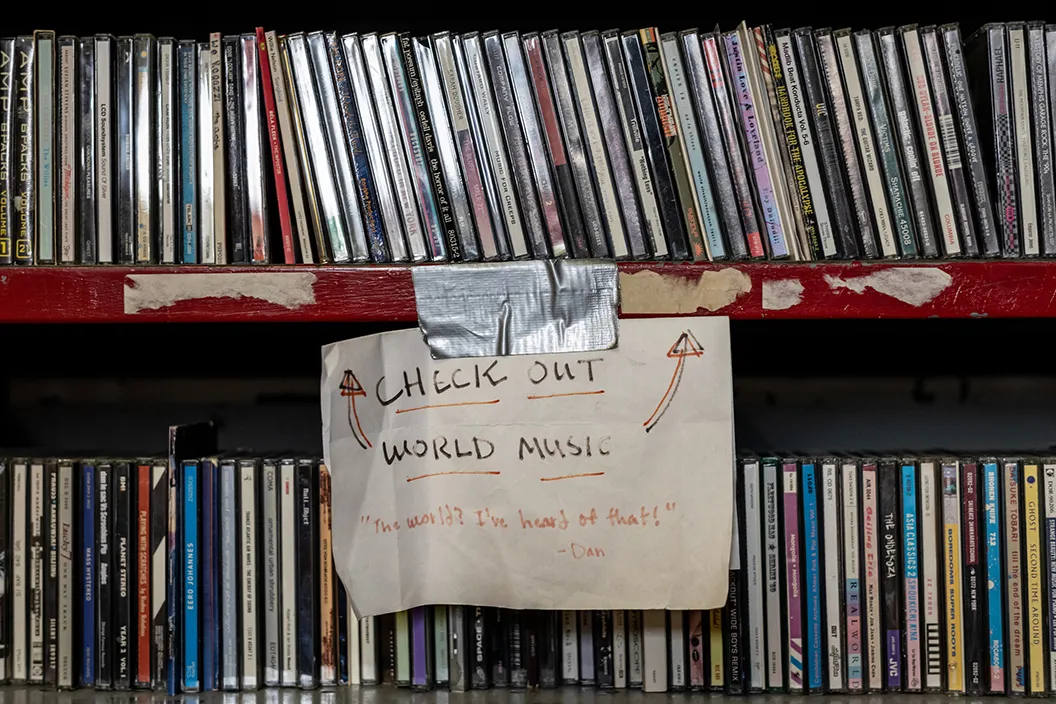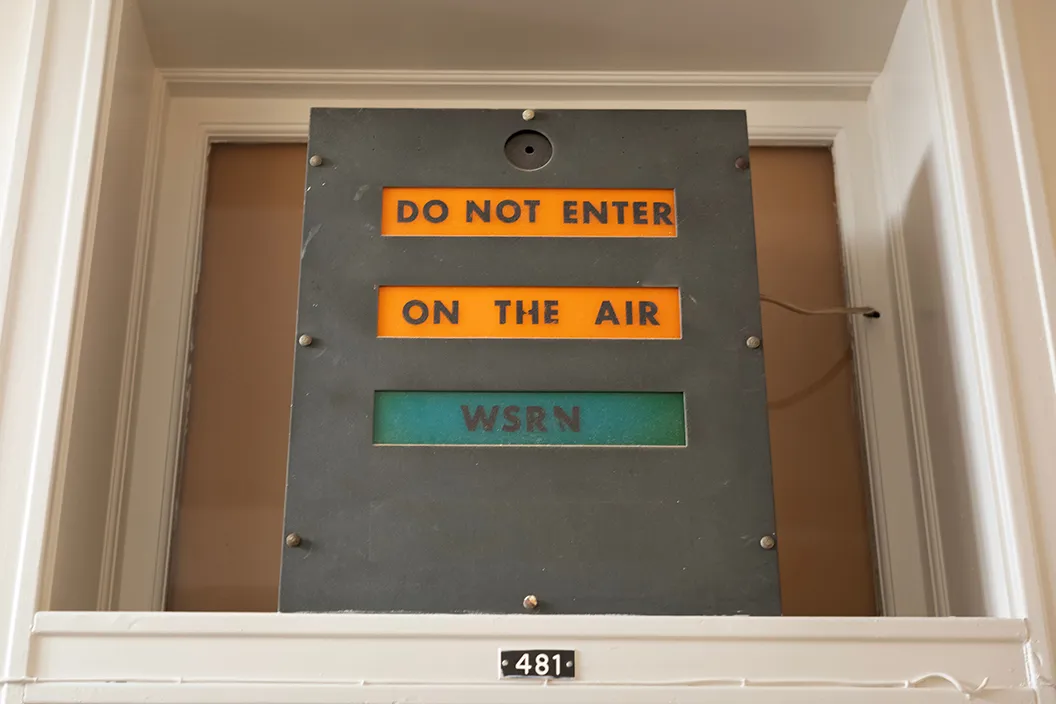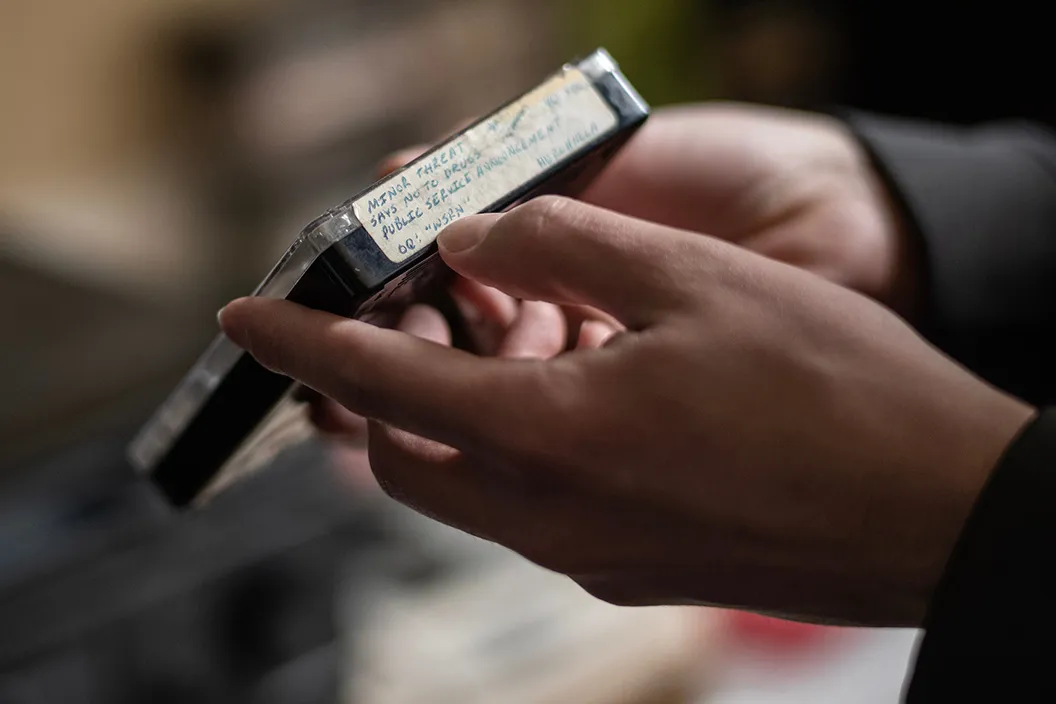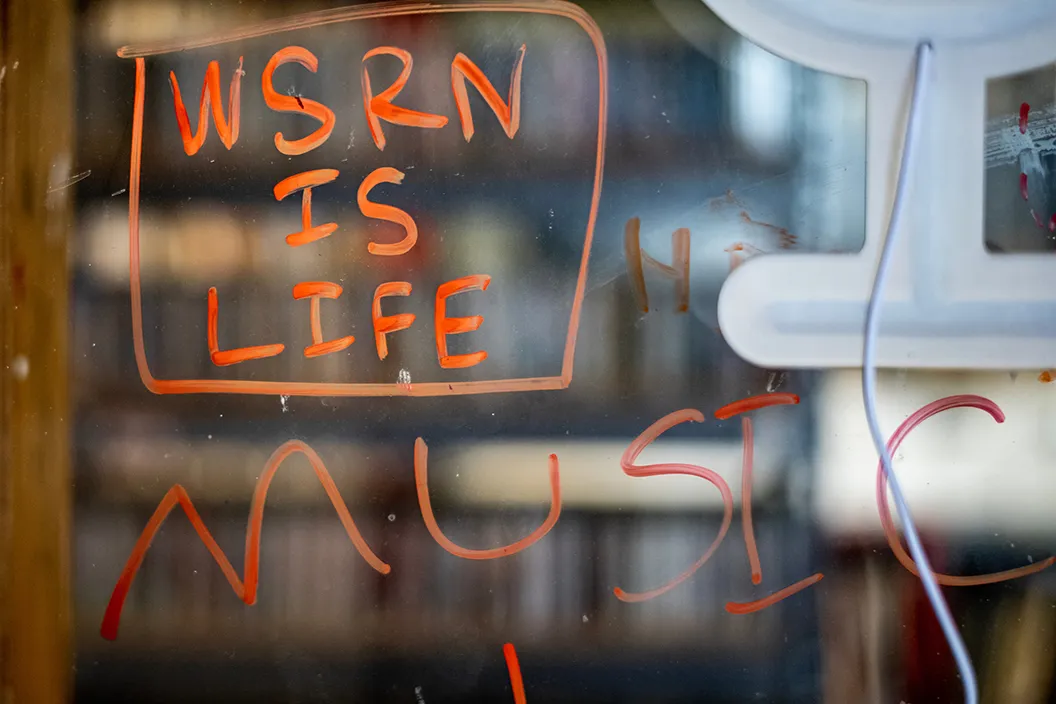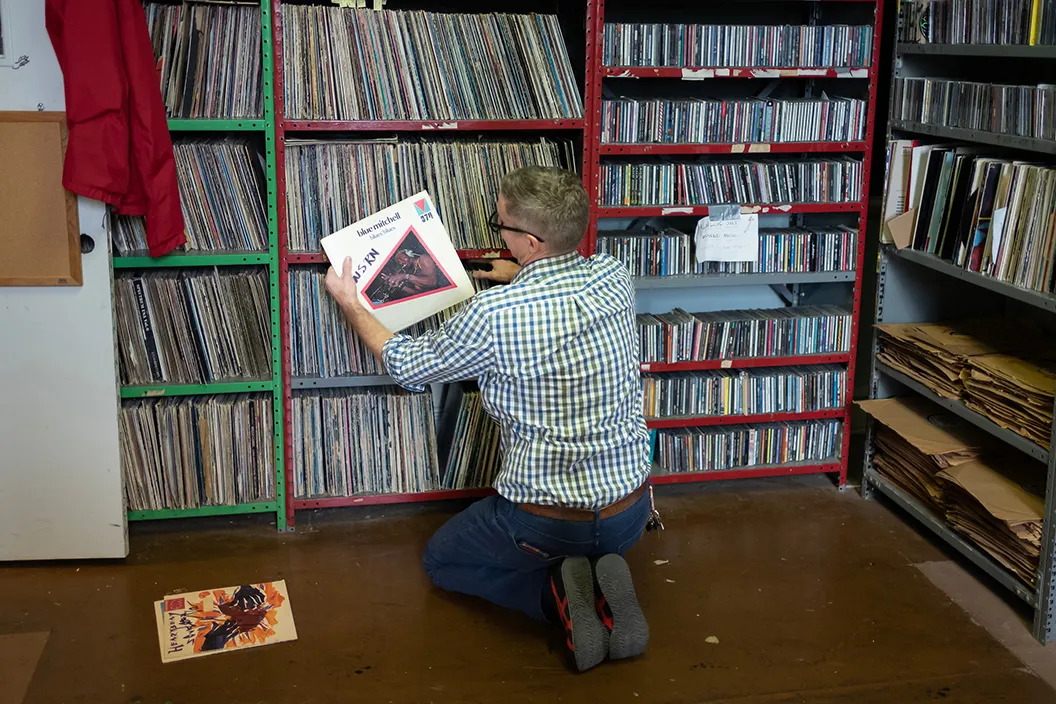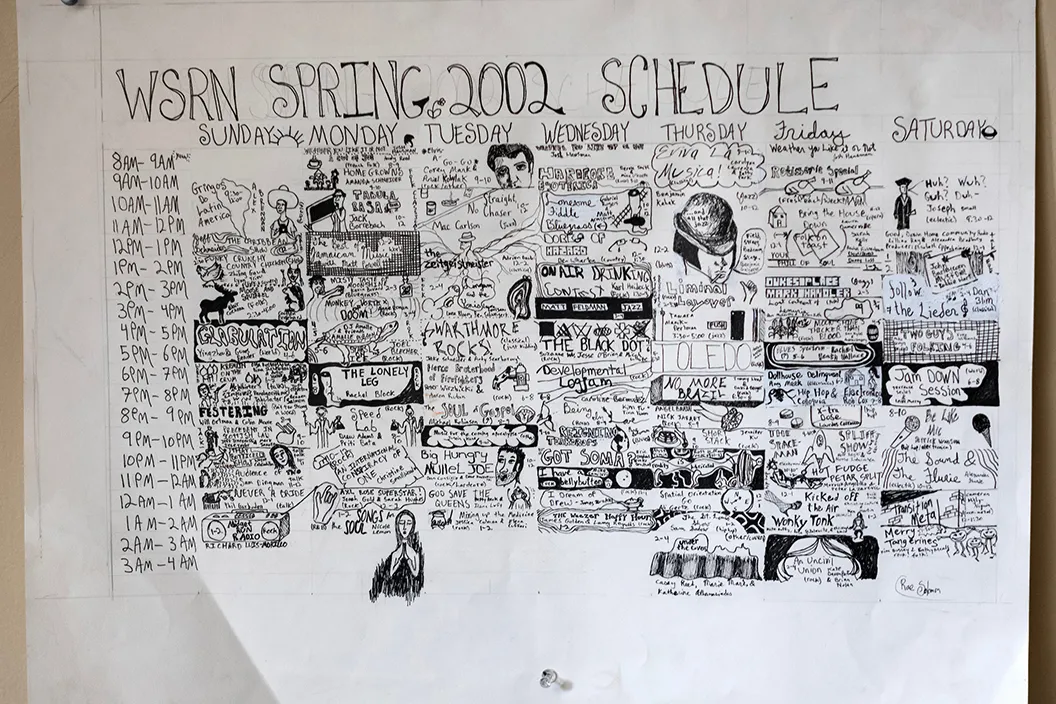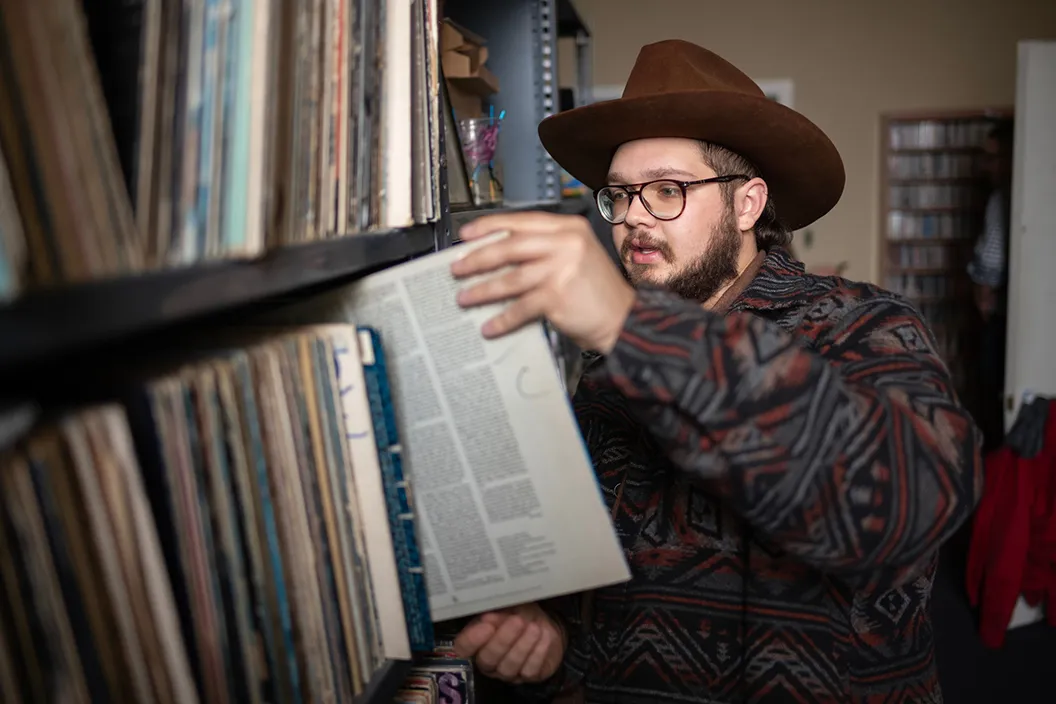Silent No Longer: WSRN Radio Revived
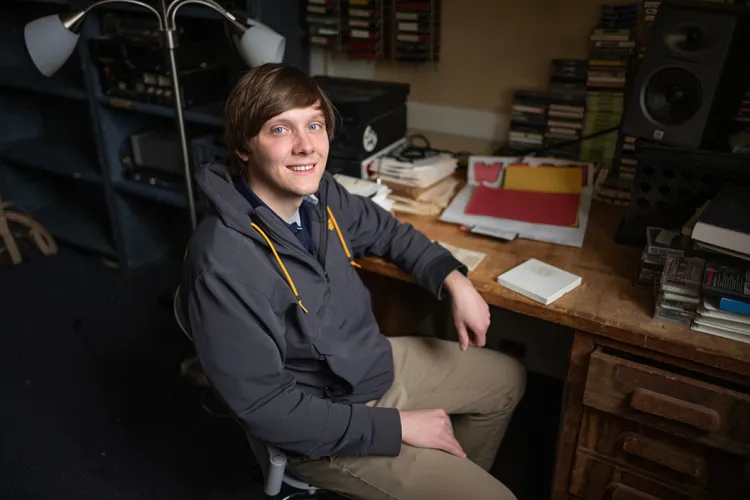
Visiting Professor of Computer Science Michael Wehar has been an instrumental part of the radio station's recent revitalization.
In the fall of 2021, Zeus Borrego ’22, together with Michael Wehar, a visiting professor of computer science, unlocked the door to the graffitied studios of Swarthmore’s student-run radio station, WSRN, which occupies the fourth floor of Parrish Hall.
The station had been silent for over a year, and the space was in chaos. Posters drooped off the walls, hanging by a single corner. Scattered across the floor were nails and fallen chunks of plaster. “It was a mess,” says Wehar. “But it was beautiful.”
Borrego and Wehar were surrounded by the remnants of a rich heritage. Vintage audio equipment was piled on the shelves, gathering dust. A library of 10,000 vinyl records, including rarities from the 1940s, lined the walls. Fascinated, Wehar removed a couple. He noticed that the sleeves were covered in witty and irreverent scrawls from student DJs long ago.
The radio station has a deep history. Its roots stretch back to 1919, when a group of engineering students and faculty set up an amateur radio club. In 1940, students were pumping Swarthmore Network, as the station was then known, into the College’s electricity supply. “Wherever there’s electricity,” wrote a Phoenix journalist in 1948, “there’s SN.”
In the 1950s, the station switched to FM. It broadcasted classical music and jazz, one-act radio plays, and interviews with professors. Commentators trailed the football team to away games. The signal stretched into the surrounding community, entertaining truck drivers on I-95 along with the students in their dorms.
By the 1980s, the radio station had become the hub of a thriving alternative rock scene. “It was a real community-building experience,” says Russell Marcus ’88, the station’s manager in 1987. WSRN’s mission? Spinning the records that struggled for airtime on commercial radio — mainly post-punk and new wave tracks. In the 1990s, the Mountain Goats, a well-known indie band, recorded a song in the Parrish studios.
Before WSRN fell silent because of the pandemic, it was operating on a much-reduced scale. In an era of on-demand podcasts and music streaming, the station was struggling to keep students interested.
Still, a dedicated core of DJs persevered, with programs on everything from old Eastern European music — on a show called “Beyond Iron Curtains” — to hip-hop and funk. They hosted discussion shows about global warming, held election-night commentaries, and in the grand tradition of college radio, there was also a lot of indie rock.
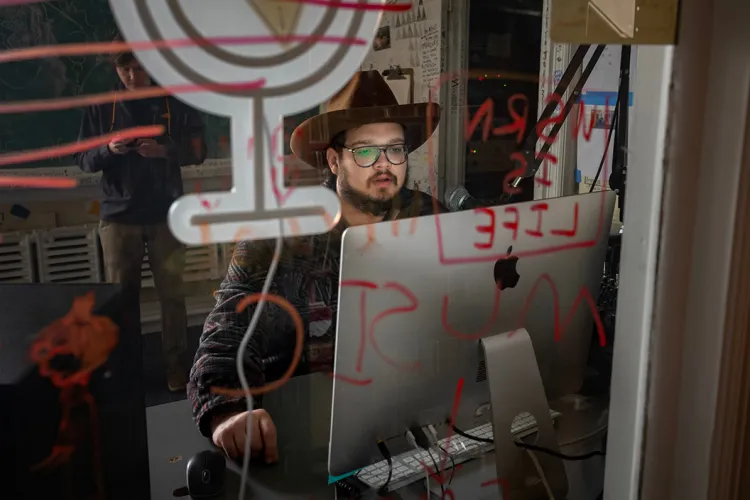
“It’s exciting for me to get to play songs by undiscovered artists,” says Martin Tomlinson ’23, host of a Tuesday evening show called “Hard as Folk."
So when Wehar and Borrego, along with Derrick Zhen ’23, the station’s current manager, saw the studios in disrepair, they felt they needed to do all they could to resurrect the station. “It feels like we’re part of this thing that has been around forever,” Zhen says.
But reviving the station, they soon found, would be a huge job. WSRN had been in a sorry state for many years. They pulled out every piece of electronic equipment to test it, and only half of the devices worked.
Faced with an overwhelming task, they got to work right away. They installed a new broadcasting system and replaced the broken furniture. They repainted the hallway walls. Zhen redesigned the software to permit online broadcasting and designed a new website. An emergency alert system was purchased and paperwork for the station’s FCC license was filed. They began digitizing the record collection.
Some months later, in the spring of 2022, WSRN hit the airwaves once again. The station now has a packed evening schedule. Students explore the vast record collection and feel liberated to speak their minds on-air. Martin Tomlinson ’23 treats his listeners to an hour of obscure folk music each Tuesday evening on his show “Hard as Folk.” “It’s exciting for me to get to play songs by undiscovered artists,” he says.
At a moment when almost any song is instantly available online, students are rediscovering the slow-burning pleasures of radio. “I enjoy the sense of community that comes with broadcasting,” says Gabby Trevino ’23, who co-hosts a Thursday night program about pop culture.
WRSN broadcasts on 91.5 FM in the Swarthmore area, and online at www.wsrnfm.com.
